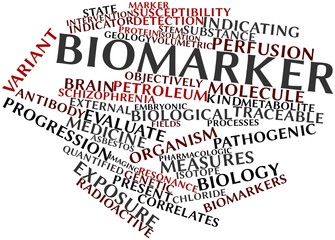“Current methods to measure biomarker levels are expensive and sophisticated, requiring biopsies and analysis in specialized laboratories,” said research team leader Sonia M. Garcia-Blanco from the University of Twente in the Netherlands. “The new technology we developed paves the way to faster and ultra-sensitive detection of panels of biomarkers that will permit doctors to make timely decisions that improve personalized diagnosis and treatment of medical conditions including cancer.”
“The biosensor could enable point-of-care devices that simultaneously screen for various diseases,” said Garcia-Blanco. “Its operation is simple and does not require complicated sample treatments or sensor operation, making it an excellent candidate for clinical applications.”
According to the team of multi-institutional researchers their work published in the journal Optics Letters shows the sensor can perform label free detection of S100A4 protein which is associated with human tumor development at clinically relevant levels, and it has potential for non-biomedical applications such as detecting different types of gases or liquid mixtures.
The chip is able to detect the presence of specific molecules by illuminating samples with light from an on hip microdisk laser which when interacting with the biomarker the colour or frequency of the laser light changes in a detectable manner.
In order to perform detection in the liquid environment of urine the researchers used photonic material aluminum oxide because when doped with ytterbium ions it can fabricate a laser that emits in wavelength ranges outside of the light absorption band of water while maintaining precise detection of biomarkers.
“Although sensors based on monitoring frequency shifts of lasers already exist, they often come in geometries that are not easily integrated on small, disposable photonic chips,” said Garcia-Blanco. “Aluminum oxide can easily be fabricated monolithically on-chip and is compatible with standard electronic fabrication procedures. This means that the sensors can be produced on a large, industrial scale.”
Using this approach may enable unprecedented sensitivity not seen in other sensors; sensitivity comes from the lasing linewidth being much narrower than resonances of passive ring resonators. Once other noise sources are eliminated this approach allows for the detection of very small frequency shift from biomarkers at very low concentrations.
The researchers were able to detect biomarkers in synthetic urine and S100A4 at as low as 300 picomolar concentration after they developed and applied a surface treatments to capture the biomarkers of interest in complex liquids. The team of multi-institutional researchers are now working to incorporate all relevant optical sources and signal generation components into the chip to make the device even easier to use, as well as developing various coatings to allow for parallel detection of a variety of biomarkers.
“Detection in this concentration range shows the potential of the platform for label-free biosensing,” said Garcia-Blanco. “Furthermore, the detection module can be potentially made very simple using the developed technology, bringing it a step closer to the final application outside of the laboratory.”




